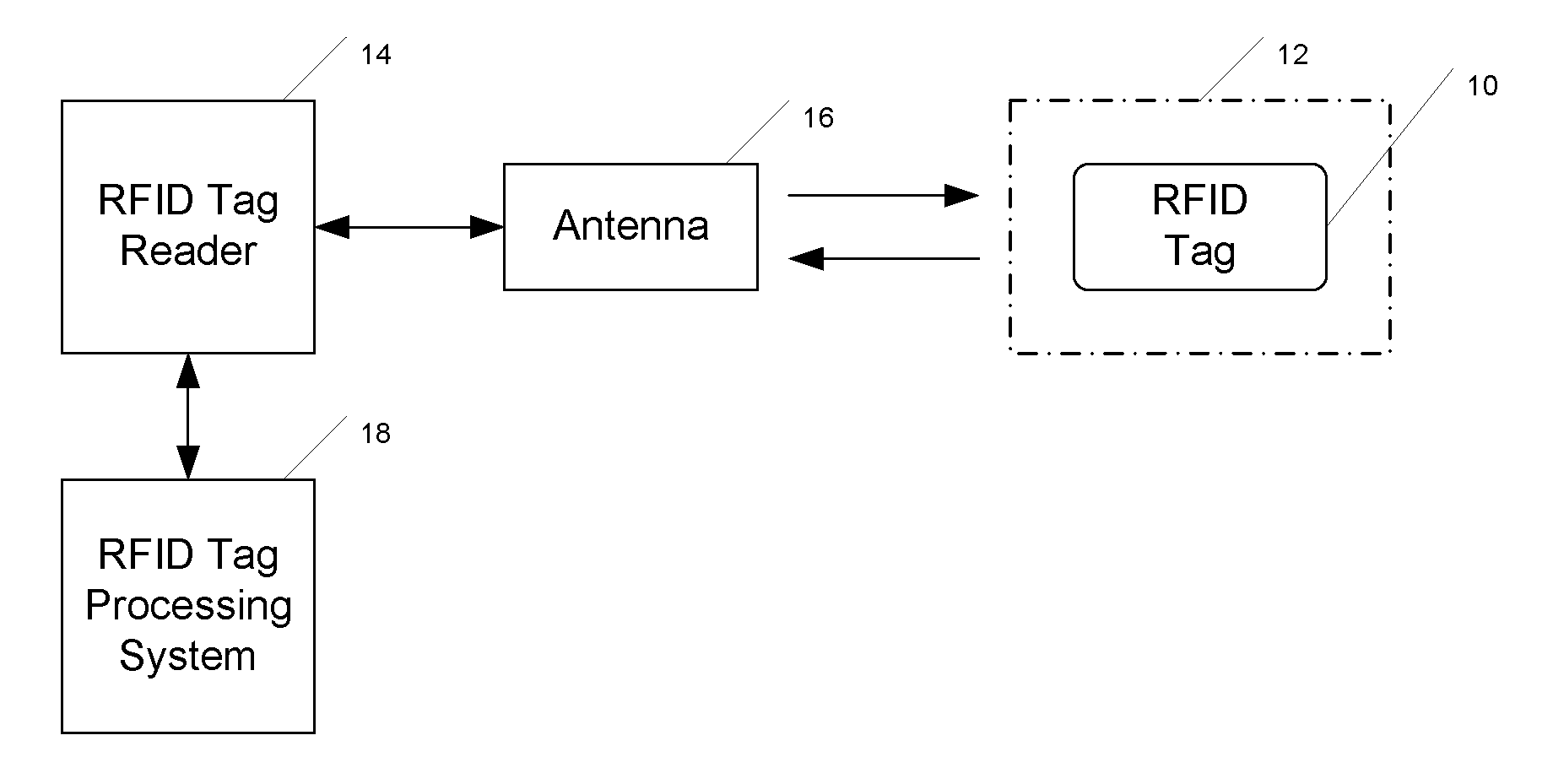RFID tag with user-controlled kill mechanism
a user-controlled, tag technology, applied in the direction of electrical equipment, memory record carrier reading problems, indirect connection of subscribers, etc., can solve the problems of no practical way to alter a barcode label, rfid tag does not automatically stop working, and consumers are less enthusiastic about the proliferation of rfid technology
- Summary
- Abstract
- Description
- Claims
- Application Information
AI Technical Summary
Benefits of technology
Problems solved by technology
Method used
Image
Examples
Embodiment Construction
[0021]FIG. 1 shows an RFID tag 10 affixed to the surface 12 of a product or other object (not otherwise shown in the drawing). As noted earlier, the RFID tag 10 carries coded data relevant to the product or object with which it is used. As one example, if the RFID tag is being used with a consumer product, the tag may carry product information such as model number, serial number, etc. As another example, if the tag is integrated into a chip injected under the skin of a pet, the tag may carry an ID number that can be associated with contact information for the pet's owner.
[0022]The coded information stored in an RFID tag is recovered by a tag reader system that includes an RFID tag reader device 14 and an antenna 16. Where the RFID tag is passive or semi-passive, the antenna 16 broadcasts an RF interrogation signal that is received by the RFID tag. The RFID tag responds by broadcasting coded information back through the antenna 16 to the RFID tag reader 14. The acquired information i...
PUM
 Login to View More
Login to View More Abstract
Description
Claims
Application Information
 Login to View More
Login to View More - R&D
- Intellectual Property
- Life Sciences
- Materials
- Tech Scout
- Unparalleled Data Quality
- Higher Quality Content
- 60% Fewer Hallucinations
Browse by: Latest US Patents, China's latest patents, Technical Efficacy Thesaurus, Application Domain, Technology Topic, Popular Technical Reports.
© 2025 PatSnap. All rights reserved.Legal|Privacy policy|Modern Slavery Act Transparency Statement|Sitemap|About US| Contact US: help@patsnap.com



